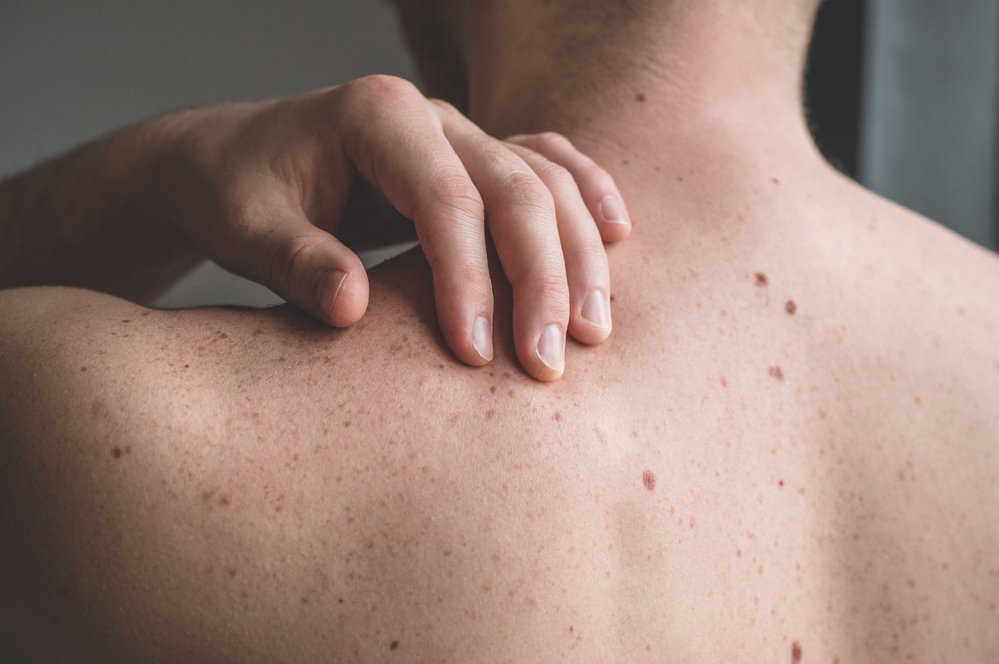Moles are a natural part of your skin and occur in people of all ages and genders. While most moles are harmless, some may be cancerous, which can be stressful as well as spelling trouble for your health. At Biotech Cosmetic Surgery & Medical Spa in Bay Harbor Islands, FL, we understand that dealing with mole removal can be overwhelming, but we are here to support and empower you to take charge of your skin health.
What Is a Mole?
Unlike freckles, which are typically flat and brown and usually occur on parts of your body that are exposed to sunlight, moles are dark round or oval-shaped spots that can appear anywhere on your skin. They usually vary in color between brown or black, but they can also be red, pink, or the same color as the surrounding skin. Moles can be flat or raised and may have a smooth or rough surface.
Can I Have an Unwanted Mole Removed?
If you feel self-conscious about a mole on your skin, know that you are not alone. When a new mole appears, especially somewhere sensitive, like the face, you might want it gone for cosmetic reasons alone. You deserve to feel comfortable and confident in your own skin, and we can help you achieve that.
However, it’s more common to have mole removal for health reasons, specifically due to a cancerous type of skin growth called melanoma. Melanoma is one of the most dangerous types of skin cancer, with the potential to spread rapidly to other parts of the body if left unchecked, and moles are often a warning sign. While most moles are harmless, it’s important to monitor them for clues that may hint at a more serious issue.
The ABCDE of Suspicious Moles
As the largest organ of our body, our skin is susceptible to various growths and changes. While most changes to your skin are harmless, suspicious moles may indicate a more serious problem that could require mole removal. To keep track of the warning signs of possible melanoma, just remember: ABCDE. By familiarizing yourself with these five characteristics, you can better identify when a mole may require medical attention, and potentially save your life.
A: Asymmetry
When it comes to recognizing suspicious moles, one important characteristic to look for is asymmetry. Asymmetry refers to whether or not a mole is the same shape on both sides. Healthy moles are usually symmetrical, meaning they are evenly shaped and balanced. Suspicious moles, on the other hand, may appear asymmetrical. This means that one side of the mole may not match the other side, or the mole may have an irregular or uneven shape.
Asymmetry is a significant warning sign of potential skin cancer, and should not be ignored. If you notice that a mole on your skin is asymmetrical, it’s crucial to have it evaluated to determine if further testing or mole removal is necessary.
B: Border
Analyzing the border of your moles is another key part of identifying whether a mole is suspicious or not. Healthy moles usually have a clear, smooth border that distinguishes the mole from the surrounding skin. On the other hand, suspicious moles may have borders that are irregular, blurry, or poorly defined, making it difficult to determine where the mole ends and the skin begins.
The border of a suspicious mole may appear to fade into the surrounding skin or have scalloped or notched edges. If you notice that the border of a mole is not well-defined or seems to blend in with your skin, it’s important to have it checked. While not all moles with an irregular border are cancerous, this is a warning sign that the mole should be examined further.
C: Color
When it comes to identifying potentially dangerous moles, color is another important factor to consider. Most healthy moles are consistent color, which is usually brown, black, or tan. However, suspicious moles can have a range or an uneven distribution of colors, This is because melanoma cells can produce different pigments, which can result in a mole having multiple colors.
If you notice a mole with multiple colors, or if you see any changes in the color of a mole, it’s important to get it checked out to determine whether or not it is a cause for concern. Remember, even if a mole is not causing any physical pain or discomfort, changes in its color should be taken seriously.
D: Diameter
Don’t feel silly taking a ruler to a mole you’re concerned about! Checking the size of a mole is an essential step in identifying whether it is healthy or suspicious. Most healthy moles are small, typically smaller than six millimeters, or the size of a pencil eraser. If a mole is larger than this, it may be cause for concern.
If you have a mole that is larger than six millimeters or if it has grown in size over time, it’s essential to have it evaluated to rule out the possibility of melanoma. Early detection is crucial in treating melanoma, and by being aware of the size of your moles and monitoring them for changes, you can take an important role in protecting your skin health.
E: Evolution
Evolution, or changes in a mole over time, could be a warning sign that something is wrong. New growth or changes in size or color could be a red flag, even if the mole seems otherwise normal. It’s also important to pay attention to any itching, bleeding, or crusting, as these symptoms can indicate a potential problem too.
If any of these five characteristics apply to one of your moles, it’s time to seek a professional opinion. While not all suspicious moles are cancerous, catching melanoma early and treating it via mole removal can greatly improve your outcome and increase your chances of survival.
Extra Risk Factors for Malignant Moles
While anyone can develop skin cancer, there are certain risk factors that increase the likelihood of developing malignant moles. If you understand these risk factors, you can take steps to protect yourself and lower your risk of developing skin cancer.
Family History of Skin Cancer
If a close family member has had skin cancer, you may be at an increased risk of developing the condition yourself. Regularly checking your skin for signs of suspicious spots and moles can help you catch any potential problems early, increasing the odds of a good outcome.
Fair Skin With High UV Exposure
People with fair skin are more susceptible to skin damage from the sun’s UV radiation, which can lead to the development of cancerous moles. It’s important to always protect your skin from the sun by wearing protective clothing, seeking shade on sunny days, and regularly using sunscreen with an SPF of 30 or higher.
Increased Age
It’s an unfortunate truth that as we age, our skin becomes more vulnerable to damage and is more likely to produce suspicious moles. People over the age of fifty are at an increased risk of developing skin cancer and should have regular skin checks to monitor for any changes.
Immune Suppression
If you have a weakened immune system, for example, if you have undergone an organ transplant or are living with HIV, you are also at an increased risk of developing skin cancer. If you know that you have a weakened immune system, be sure to perform regular skin checks to catch problems before they get out of hand.
A History of Skin Damage
Damaged skin is vulnerable skin, and it’s important for you to be aware of it. If you’ve damaged your skin in the past, it can increase your risk of developing skin cancer. For example, a history of sunburns, tanning bed use, and exposure to damaging chemicals can all up your risk.
Be Vigilant About Mole Removal
If you have any of these risk factors, it’s important to be extra vigilant about monitoring your skin for changes and seeking medical attention if you notice any suspicious moles. By taking steps to protect yourself and staying aware of the risk factors, you can take control of your health and lower your risk of developing malignant moles.
Take Action on Unwanted Moles
Whether you have a mole that bothers you for cosmetic reasons, or you’ve found one that’s suspicious, there’s no shame in wanting to have it removed. After all, the most important thing is to prioritize your health and well-being. If you need a consultation you can trust in Bay Harbor Miami, Coral Gables, or Sunny Isles, reach out to Biotech Cosmetic Surgery & Medical Spa in Bay Harbor Islands, FL, and request an appointment to see what we can do for you.


